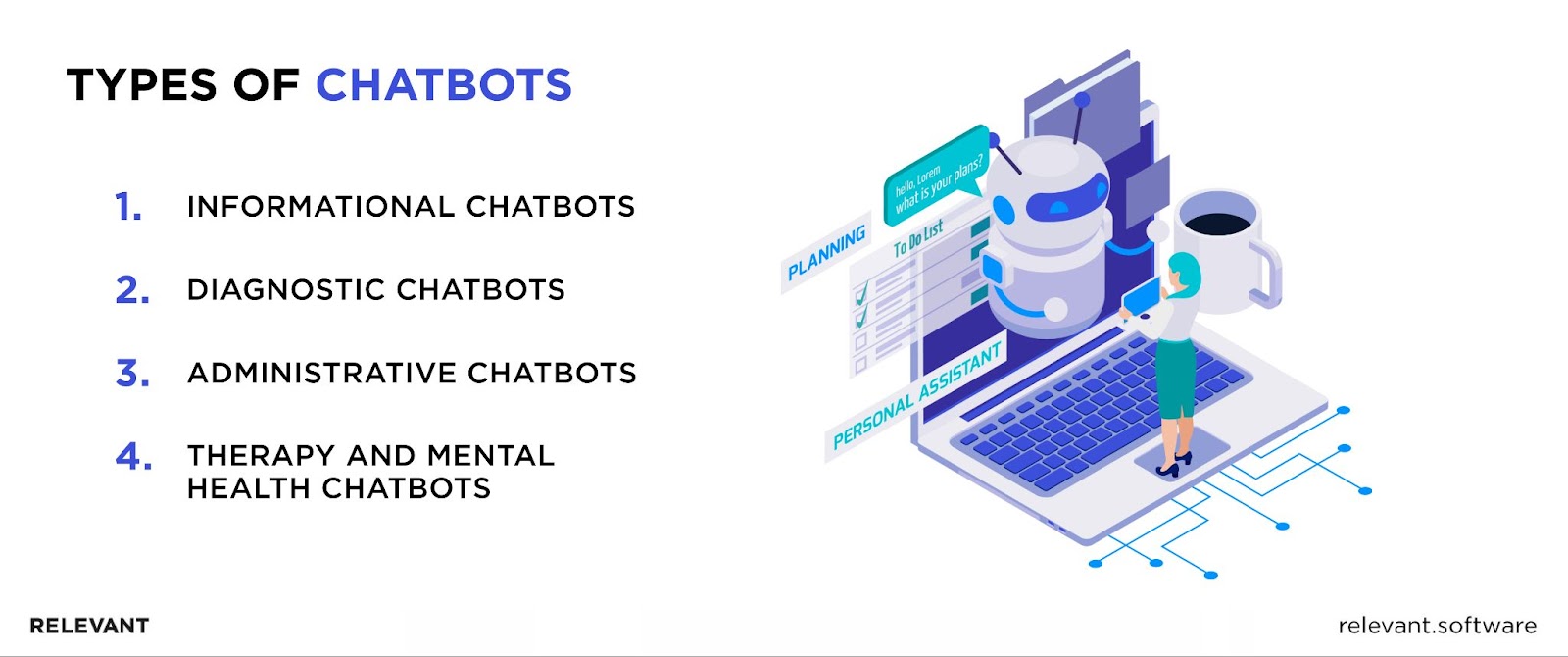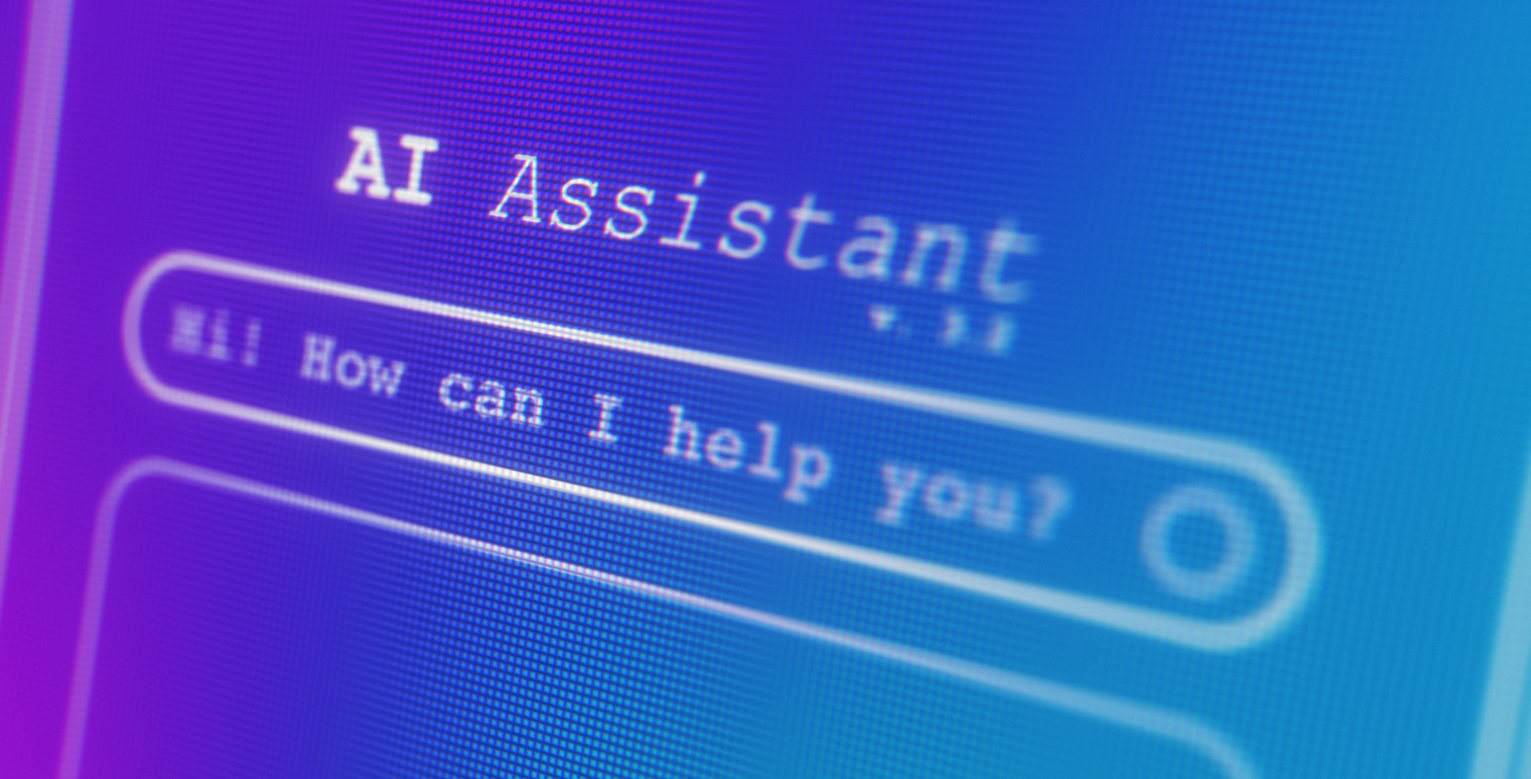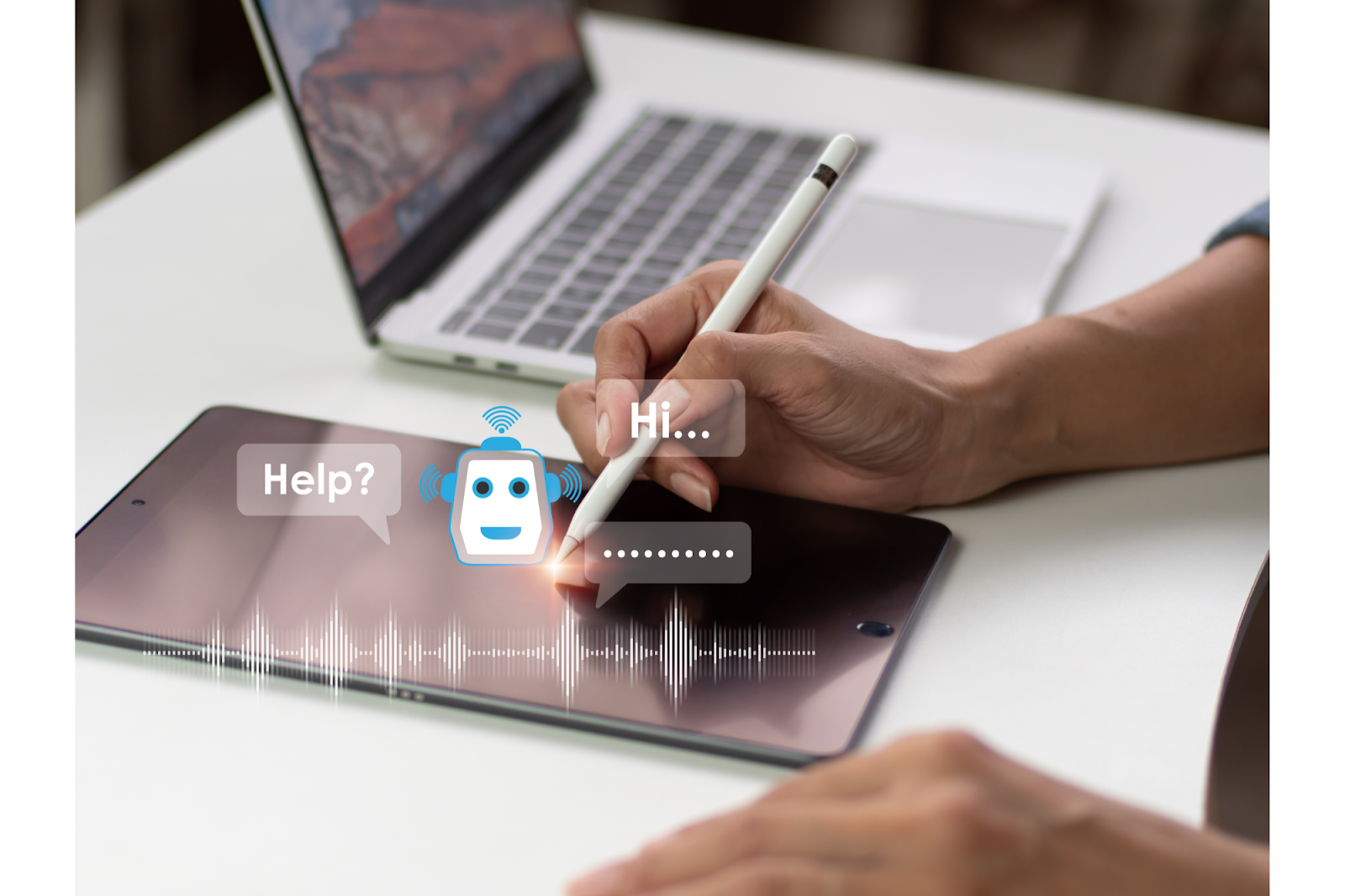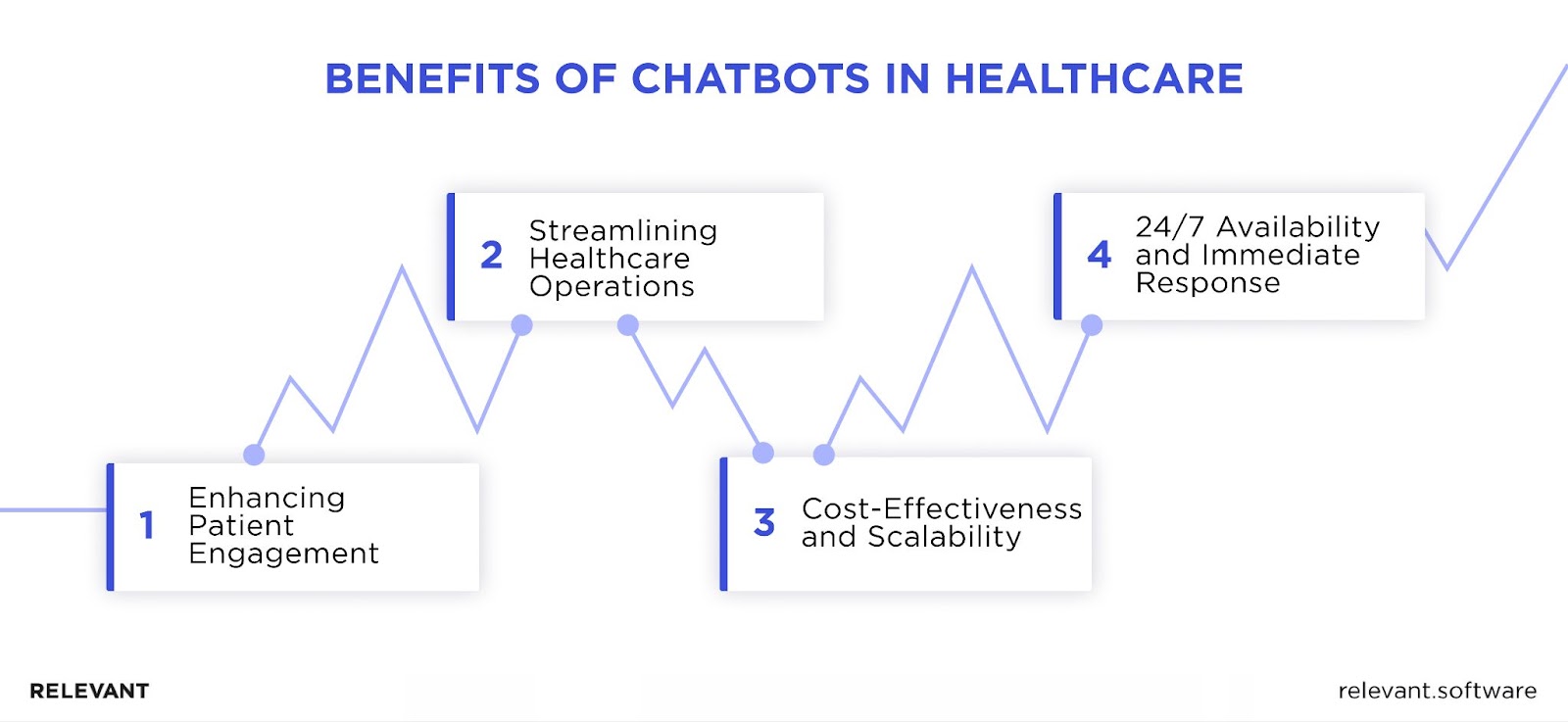The Many Hats of Chatbots in Healthcare: Types and Their Applications
Updated: June 4, 2025
A report by Precedence Research noted that the market value for AI chatbots in healthcare stood at $4.3 million in 2023. This number will jump to $65 million by 2032, with an annual growth rate of 16.98%. What does this point to? It’s just that healthcare has received a powerful tool, mastered it, and plans to use it in the future.
Assessing symptoms, consulting, renewing prescriptions, and booking appointments — this isn’t even an entire list of what modern healthcare chatbots can do for healthcare entities. They never get tired and help reduce the workload for doctors, which makes patient care better.

We provide companies with senior tech talent and product development expertise to build world-class software. Let's talk about how we can help you.
Contact usThere are many other reasons to build a healthcare chatbot, and you’ll find most of them here. The insights we’ll share are grounded on our 10-year experience and reflect our expertise in healthcare software development.
Table of Contents
The Overview of Chatbot Evolution in Healthcare
Chatbots, or virtual digital companions who engage in conversational interactions, have come a long way since their inception. From their early days as simple rule-based systems to their current incarnation as sophisticated AI-powered assistants, chatbots have evolved remarkably, shaping the future of healthcare delivery.
Early Beginnings: The Seeds of Automation (1990s-2000s)
Early chatbots in healthcare focused on automating routine tasks like appointment scheduling and medication reminders. These systems relied on rule-based algorithms and limited natural language processing, offering a basic level of interaction.
Examples: Florence Nightingale (1997), AskMD (1998), Virtual Nurse (2000)
Rise of Rule-Based Systems: Expanding Capabilities (2000s-2010s)
Chatbots have begun to use more advanced natural language processing, which allows them to understand people’s questions and answer them in more detail and naturally. They have become experts in meeting certain needs, like helping with long-term health conditions, giving support for mental health, or helping people remember to take their medicine.
Examples: Ada (2011), Your.MD (2011), Babylon Health (2013)
The Age of AI: Personalization and Insights (2010s-present)
The advent of artificial intelligence and machine learning empowered chatbots to learn and adapt based on user interactions and data analysis, offering personalized recommendations and support. Chatbots became capable of managing a broader spectrum of health needs, including preventive care, disease monitoring, and personalized health plans.
Examples: Buoy Health (2014), GYANT (2016), KITT (2017), Woebot (2017)
Current State of Chatbots in Healthcare
Chatbots are now equipped with advanced conversational AI capabilities to understand complex questions, engage in natural dialogue, and build rapport with users. They leverage data analytics to provide personalized health insights and recommendations customized to individual needs and preferences. This allows them to take on even more complex responsibilities, such as recognizing symptoms and even making diagnoses. With such improvements, the future of chatbots in healthcare looks quite bright.
Examples: Molly by Sensely (2019), Koko (2020), Google AI: LaMDA (2021), Amazon HealthLake (2020)
How Chatbots Work in a Healthcare Setting: A Look Under the Hood
Chatbots used in healthcare aren’t just pop-up talking interfaces. They leverage AI technology to understand and respond to users, ultimately aiming to improve patient experience and healthcare services. Here’s a breakup of their inner workings:

1. Understanding User Intent
Users interact with chatbots through text or voice commands. The chatbot’s NLP capabilities analyze the user’s input to understand their intent and desired outcome. This involves identifying keywords, phrases, and context to interpret the user’s query or request.
2. Generating Responses and Taking Actions
Based on the user’s intent, the chatbot retrieves relevant information from its database or interacts with external systems like electronic health records. The information is then processed and tailored into a response that addresses the user’s needs. For tasks like appointment scheduling or medication refills, the chatbot may directly integrate with relevant systems to complete the action.
3. Learning and Adapting
Chatbots constantly learn from user interaction and feedback. This helps them get better at understanding how people naturally talk, recognize the usual questions people ask, and give more personalized answers over time. Advanced chatbots can even learn to adapt their communication style to different users and situations.
4. Integration with Existing Systems
Chatbots can be connected with electronic health records, systems that manage medical practices, and other healthcare-related platforms. This allows them to access and utilize patient data to provide personalized care and recommendations. Integration also streamlines workflows for healthcare providers by automating routine tasks and providing real-time patient information.
5. Security and Privacy
Chatbots often deal with sensitive patient data that require strong security measures to ensure confidentiality and compliance with regulations like HIPAA. So it’s crucial to store data safely, encrypt it, and control who can see it to protect patient details. Transparency and user control over data are also essential to building trust and ensuring the ethical use of chatbots in healthcare.
Types of Chatbots and Their Applications
Even though most types of chatbots in healthcare do similar things, they have some differences we should talk about.

1. Informational Chatbots
These chatbots primarily serve as digital repositories of health information. They are programmed to provide patients with accurate and relevant health-related data.
Functions:
- Answer common questions about the facility, including visiting hours, directions to departments, and available services.
- Offer educational resources on various health topics, bespoken to the patient’s specific needs or interests.
- Explain medical terms and procedures in a simple way, reducing their worry and helping them make informed choices.
- Guide patients to relevant resources within the facility or online, such as support groups, health articles, and educational videos.
Applications:
- Reduce wait times at information desks by providing readily accessible information.
- Enhance patient education by offering interactive learning materials.
- Improve patient satisfaction by addressing concerns and providing prompt assistance.
- Promote self-care and preventative health measures by offering educational resources and reminders.

2. Diagnostic Chatbots
These chatbots are made to help with basic medical check-ups. They use AI algorithms to analyze symptoms reported by patients and suggest possible causes or conditions.
Functions:
- Gather information about symptoms, medical history, and current medications through interactive dialogues.
- Analyze the collected data to suggest potential causes of symptoms and identify potential risks.
- Suggest self-care measures and recommend non-prescription medicines depending on how serious the symptoms are.
- Highlight the necessity of consulting with medical professionals when required and facilitate the connection of patients with suitable healthcare resources.
Applications:
- Reduce patient anxiety by providing preliminary assessments and recommendations.
- Enhance patient health outcomes by steering them towards the most suitable level of medical care.
- Minimize unnecessary emergency room visits by facilitating early detection and intervention.
- Enable patients to actively manage their well-being by offering them resources and knowledge for self-care.
3. Therapy and Mental Health Chatbots
Such types of chatbots are specifically developed to provide mental health support. They apply methods from cognitive-behavioral therapy (CBT) and various other therapy approaches in their interactions with users.
Functions:
- Provide compassionate assistance and tailored advice for a range of mental health issues, such as anxiety, depression, and stress.
- Facilitate cognitive behavioral therapy (CBT) exercises and mindfulness techniques, helping patients develop coping mechanisms.
- Connect patients with mental health professionals and support groups for further assistance and community engagement.
- Provide a range of mental health resources and therapeutic choices, equipping individuals with the necessary information to make knowledgeable decisions.
Applications:
- Enhance the availability of mental health services by addressing stigma and location-based obstacles.
- Provide round-the-clock assistance and advice, particularly for those reluctant to pursue conventional therapy.
- Augment traditional therapy by providing reinforcement and practice opportunities for CBT exercises.
- Alleviate the workload of mental health professionals by managing routine responsibilities and providing preliminary assistance.
4. Administrative Chatbots
They are AI-powered virtual assistants designed to automate routine administrative tasks, streamline workflows, and improve operational efficiency across healthcare facilities.
Functions:
- Schedule appointments and manage cancellations or rescheduling requests, offering flexibility and convenience.
- Refill prescriptions automatically and notify patients when ready for pick-up, ensuring adherence to medication regimens.
- Process insurance claims and answer billing inquiries, promoting transparency and resolving financial concerns.
- Enable secure and easy online payment methods for healthcare services, offering a reliable and user-friendly option for transactions.
- Offer patients the ability to access their medical records and health information, fostering patient involvement and empowering them to manage their own health.
Applications:
- Reduce wait times for appointments, phone lines, and administrative tasks.
- Improve patient satisfaction by offering convenient and user-friendly services.
- Optimize administrative processes for healthcare professionals, enabling them to concentrate on patient treatment.
- Empower patients by providing control over their health information and appointments.
- Collaborate seamlessly with CRM, ERP, and other software to streamline workflows further.
- Analyze data, generate reports, and even handle decision-making processes.
Each type of chatbot plays a unique role in the healthcare ecosystem, contributing to improved patient experience, enhanced efficiency, and personalized care. With the continuous progression of technology, we are likely to witness the emergence of increasingly innovative chatbots. These advancements will significantly shape and transform the future landscape of healthcare delivery.

Benefits of Chatbots in Healthcare
The advantages of chatbots in healthcare for both patients and healthcare providers are numerous. Let’s delve into the key areas where chatbots shine:

Enhancing Patient Engagement
- Improved Communication and Accessibility: Chatbots provide 24/7 access to information and support, removing geographical and time barriers for patients. They answer questions, address concerns, and guide patients through various healthcare processes, fostering informed decision-making and improved self-management of health.
- Personalized interactions: Chatbots in healthcare industry can personalize their responses based on patient needs and preferences, creating a more engaging and relevant experience. They can even adapt their communication style to specific users, making support more convenient and user-friendly.
- Multilingual Support: Chatbots can overcome language barriers by providing multilingual support, ensuring equitable access to healthcare information and resources for diverse patient populations. This inclusivity fosters trust and builds stronger relationships between patients and healthcare systems.
Streamlining Healthcare Operations
- Reduced Administrative Workload: Chatbots that handle admin tasks are great at taking over routine jobs like setting up appointments, refilling prescriptions, and handling billing questions. This gives healthcare workers more time to take care of patients directly.
- Improved Workflow Management: Chatbots help you manage appointment scheduling and reminders, track patient data, generate reports, streamline workflows, and optimize resource allocation within healthcare organizations. This results in enhanced operational effectiveness and more efficient use of resources.
- Data collection and analysis: AI chatbots in healthcare provide valuable insights into patient needs and preferences, allowing healthcare providers to personalize care and improve service delivery.
Cost-Effectiveness and Scalability
- Reduced administrative costs: If you plan to significantly reduce operational costs by automating tasks, optimizing resource allocation, and minimizing administrative burdens, use chatbots. They free up your financial resources to reinvest in improving patient care and expanding healthcare services.
- Scalability to meet growing needs: Chatbots can be effortlessly adapted and expanded to cater to the evolving needs of healthcare organizations as they grow. They can handle large volumes of inquiries and requests efficiently, ensuring that patients receive timely and consistent support regardless of the size of the healthcare facility.
- Reduced Investment Costs: Compared to traditional healthcare IT solutions, chatbots require a lower initial investment and ongoing maintenance costs. This makes them a cost-effective solution for healthcare organizations of all sizes, particularly smaller clinics and practices.
24/7 Availability and Immediate Response
- Round-the-clock assistance: These digital assistants are available 24x7x365, providing patients immediate access to information and support outside traditional healthcare hours. This is particularly advantageous for people with chronic health issues or those in need of immediate advice regarding health matters.
- Immediate responses to inquiries: Chatbots provide instant feedback and answers to routine questions, reducing anxiety and improving patient satisfaction. Improved accessibility and enhanced responsiveness lead to increased patient satisfaction, fostering a more positive healthcare experience.
- Proactive Health Management: Diagnostic chatbots can proactively monitor patient health data and provide personalized recommendations based on individual needs. This approach allows for the early identification of potential health issues, enabling timely action to be taken. This supports preventive healthcare and leads to better overall health results.

Final words
Certainly, chatbots can’t match the expertise and care provided by seasoned doctors or qualified nurses because their knowledge bases might be constrained, and their responses sometimes fall short of user expectations.
However, despite certain disadvantages of chatbots in healthcare, they add value where it really counts. They can significantly augment the efforts of healthcare professionals, offering time-saving support and contributing meaningfully in crucial areas.
Relevant is ready to consult you and help you create an informational, administrative, hybrid chatbot, etc. Skillful in healthcare software development, our dedicated developers can utilize out-of-the-box components or create custom medical сonversational AI chatbots from the ground up. No matter what kind of healthcare area you are in – telehealth, mental support, or insurance processing, we will bring you invaluable benefits in saving costs, automating business processes, and giving you a great opportunity to maintain profits.
Our core services:
Do you want a price estimate for your project?
Do you know that we helped 200+ companies build web/mobile apps and scale dev teams?
Let's talk about your engineering needs.
Write to us











